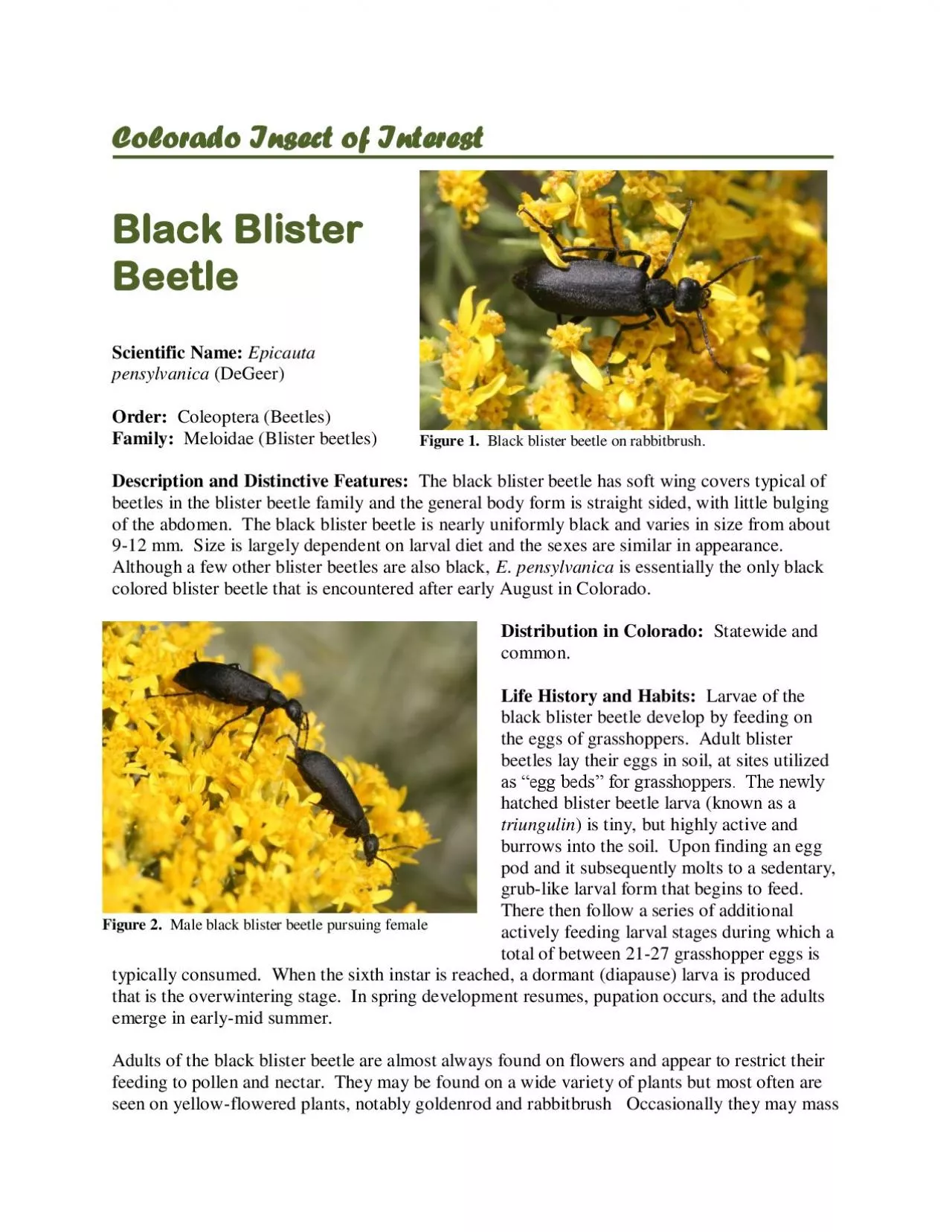

Figure 1 rush Figure 2 Male black blister beetle pursuing female Colorado Insect of Interest Black Blister Beetle Scientific Name Epicauta pensylvanica DeGeer Order Coleoptera Beetles F ID: 937512
Download Pdf The PPT/PDF document "Black blister beetle on rabbitb" is the property of its rightful owner. Permission is granted to download and print the materials on this web site for personal, non-commercial use only, and to display it on your personal computer provided you do not modify the materials and that you retain all copyright notices contained in the materials. By downloading content from our website, you accept the terms of this agreement.
Figure 1. Black blister beetle on rabbitb rush . Figure 2. Male black blister beetle pursuing female Colorado Insect of Interest Black Blister Beetle Scientific Name: Epicauta pensylvanica (DeGeer) Order: Coleoptera (Beetles) Family: Meloidae ( Blis t er beetles) Description and Distinctive Features: The black blister beetle has soft wing covers typical of beetles in the blister beetle family and the general body form is straight sided, with little bulging of the abdomen. The black blister beetle is nearly uniformly black and varies in size from about 9 - 12 mm. Size is largely dependent on larval diet and the sexes are similar in appearance. Although a few other blister beetles are also black, E. pensylvanica is essentially the only black colored b lister beetle that is encountered after early August in Colorado. Distribution in Colorado: Statewide and common. Life History and Habits: Larvae of the black blister beetle develop by feeding on the eggs of grasshoppers. Adult blister beetles lay th eir eggs in soil, at sites utilized as “egg beds” for grasshoppers. The newly hatched blister beetle larva ( known as a triungulin ) is tiny, but highly active and burrows into the soil. Upon finding an egg pod and it subsequently molts to a sedentary, gru b - like larval form that begins to feed. There then follow a series of additional actively feeding larval stages during which a total of between 21 - 27 grasshopper eggs is typically consumed. When the sixth instar is reached, a dormant (diapause) larva is produced that is the overwintering stage. In spring development resumes, pupation occurs, and the adults emerge in early - mid summer. Adults of the black blister beetle are almost always found on flowers and appear to restrict their feeding to pollen and nectar. They may be found on a wide variety of plants but most often are seen on yellow - flowered plants, notably goldenrod and rabbitbrush Occasionally they may mass Figure s 4 , 5 . Epicauta ferruginea , one of the most common blister beetles found on flowers in late summer. Gray phase above
; rusty phase below. Figure 3 Threestriped blister beetle , a species that occurs in southeastern Colorado and has high levels of toxic cantharidin in its blood. Photograph courtesy of John Capinera. Figure 6 . Epcauta aspersa , a late season blister beetle that sometimes is found at flowers with the black b lister beetle. in crops during late summer but, unlike some other blister beetles, do not damage folia ge and are usually concentrated on flowers of either the crop and/or flowering weeds. Black blister beetles may be present well into October, as long as suitable flowers are available and killing frosts have not occurred. Blister beetles (Meloidae fami ly) get their common name from the production in their blood of a highly toxic compound, cantharidin, which is irritating and even capable of producing blisters in high enough concentration. However, the black blister beetle is a species that produces ver y low levels cantharidin. Related Species: The black blister beetle is one of about 35 species of blister beetles in the genus Epicauta that occur in Colorado. All are thought to similarly develop as predators of grasshopper eggs but most, unlike the black blister beetle, feed on leaves and flowers of plants, particularly legumes. A common pollen feeding species that also is found on flowers in late summer is Epicauta ferruginea Say , which is variably colored from pale rusty red to grayish - brown. Epi cauta aspersa Werner i s another gray blister beetle that may be present at flowers in mixed populations with the black blister beetle in later summer and early fall. Blister beetles have some notoriety in the state because of the potential for them to h urt livestock, particularly horses, when accidentally baled into hay and fed. The most important species in this regard is the threestriped blister beetle, Epicauta occidentalis Werner (formerly E. lemniscata ). It has very high levels of cantharidin in its blood and periodically masses in blooming alfalfa fields. The threestriped blister beetle is a species that is present early in the season, sometimes massing and contaminating the first cutting of alfalfa